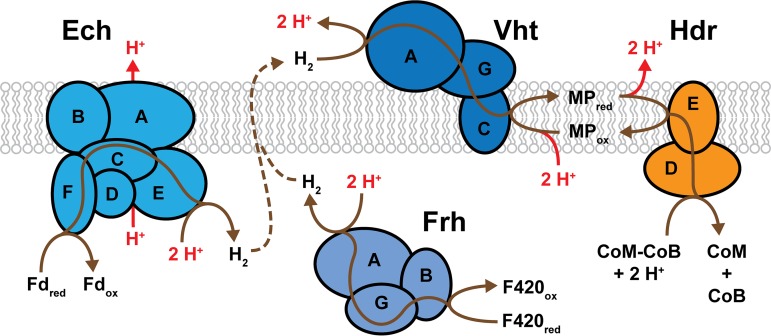FIG 7.
The H2-dependent electron transport system of Methanosarcina. Electrons enter the transport system as either externally provided H2 or internally generated Fdred or F420red. All pathways involve the oxidation of H2 by Vht, and the transport of electrons by MP to the heterodisulfide reductase for reduction of the terminal electron acceptor, CoM-CoB. Regeneration of CoM and CoB enables continued methanogenesis. Frh and Ech generate H2 with electrons from F420red and Fdred, respectively. The internally produced H2 diffuses across the membrane (dashed line) and is oxidized by Vht, thereby transferring 2 H+ ions from the inside to the outside of the cell. The exergonic reaction catalyzed by Ech facilitates additional proton translocation. For each pathway, 2 H+ ions are consumed from the cytoplasm during MP reduction and released outside of the cell upon MP oxidation. Thus, the transport of 2 electrons results in 4 H+ ions translocated for the F420red:CoM-CoB pathway and 5 H+ ions translocated for the Fdred:CoM-CoB pathway (indicated in red). Brown lines trace the putative pathways of electron transport. Enzyme subunits are identified by letters.

